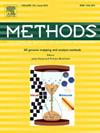用于局部鞘脂代谢分析的光活化化学脂组学方法
IF 4.3
3区 生物学
Q1 BIOCHEMICAL RESEARCH METHODS
引用次数: 0
摘要
在真核细胞中,脂质代谢受到亚细胞定位的严格调控,这对于维持脂质稳态至关重要。然而,由于可用的合适技术有限,理解区隔化脂质代谢仍然具有挑战性。在这项研究中,我们提出了一种化学脂质组学方法,将光激活探针与高分辨率质谱和稳定同位素标记相结合,在亚细胞分辨率下分析脂质动力学。我们应用这种方法分析了1-脱氧鞘脂(DoxSL)的代谢,这是一种与各种代谢疾病和神经病变有关的非典型脂质物种,其代谢在很大程度上仍未被探索。使用光激活探针,我们在光照下选择性地将1-脱氧鞘氨氨酸(一种关键的DoxSL中间体)递送到线粒体,随后分析了其随时间变化的局部代谢产物。我们的数据表明,大多数传递到线粒体的1-脱氧鞘氨酸迅速转化为1-脱氧神经酰胺,而只有一小部分形成氧化产物。进一步的脂质组学分析表明,1-脱氧神经酰胺被运输到细胞外空间,DoxSL也存在于小鼠和人血清样本中。总之,我们开发了一种新颖的探针,以非侵入性的方式高时空分辨率跟踪脂质动力学,并为鞘脂代谢提供了新的见解。本文章由计算机程序翻译,如有差异,请以英文原文为准。
A photoactivatable chemical lipidomics approach for local sphingolipid metabolic analysis
In eukaryotic cells, lipid metabolism is tightly regulated depending on the subcellular localization, which is essential for maintaining lipid homeostasis. However, understanding compartmentalized lipid metabolism remains challenging due to limited availability of suitable techniques. In this study, we present a chemical lipidomics approach that combines photoactivatable probes with high resolution mass spectrometry and stable-isotope labelling to analyze lipid dynamics at subcellular resolution. We applied this method to analyze the metabolism of 1-deoxysphingolipid (DoxSL), a non-canonical lipid species linked to various metabolic diseases and neuropathy, whose metabolism remains largely unexplored. Using the photoactivatable probes, we selectively delivered 1-deoxysphinganine, a key DoxSL intermediate, to mitochondria upon photo-illumination and subsequently analyzed its local metabolic products over time. Our data show that most 1-deoxysphinganine delivered to mitochondria is rapidly converted into 1-deoxyceramides, while only a small fraction forms oxidized products. Further lipidomic analysis revealed that 1-deoxyceramides are transported to the extracellular space and that DoxSL is also present in mouse and human serum samples. In summary, we developed novel probes to track lipid dynamics with high spatiotemporal resolution in a non-invasive manner and provided new insights into sphingolipid metabolism.
求助全文
通过发布文献求助,成功后即可免费获取论文全文。
去求助
来源期刊

Methods
生物-生化研究方法
CiteScore
9.80
自引率
2.10%
发文量
222
审稿时长
11.3 weeks
期刊介绍:
Methods focuses on rapidly developing techniques in the experimental biological and medical sciences.
Each topical issue, organized by a guest editor who is an expert in the area covered, consists solely of invited quality articles by specialist authors, many of them reviews. Issues are devoted to specific technical approaches with emphasis on clear detailed descriptions of protocols that allow them to be reproduced easily. The background information provided enables researchers to understand the principles underlying the methods; other helpful sections include comparisons of alternative methods giving the advantages and disadvantages of particular methods, guidance on avoiding potential pitfalls, and suggestions for troubleshooting.
 求助内容:
求助内容: 应助结果提醒方式:
应助结果提醒方式:


